Having come through the Corinth Canal in mid-July we anticipated spending about three weeks in the Saronic Islands and along the adjacent coast before sailing across to the Cyclades. However, the Meltemi had different ideas! The constant strong winds in the Cyclades throughout this summer meant that we ended up spending three months in the Saronics, the Argolic Gulf and the Eastern Peloponnese.
Whilst we might have been relatively happy to weather out the various blows in a secure Cycladian anchorage we had three sets of visitors during the period and it did not seem like a good idea to subject them to either heavy wind and/or seas or to a probable restricted trip visiting maybe just two or three places.
But, no complaints from us. There are certainly worse places to spend the summer and even though we visited some of the harbours and anchorages several times, we didn’t tire of them and we made the most of what the Saronic/Argolic cruising ground has to offer.
One of our most visited places was Aegina – mainly because all three sets of guests met us there and one left from there. It is definitely a good place to meet and greet people as it is a short “dolphin” or ferry ride from Athens and the church at the entrance to the harbour makes for a real Greek welcome.
Those sailors who have visited will know that whilst the harbour looks to be a relatively good size, much of it is filled with local boats and/or is too shallow for sailboats with a draft of more than 2m. It is also very popular with Athenians who come across for the weekend or, in some cases, the whole summer – usually in a sizeable motor yacht. Anchor wars [more of that later] are common and our first visit to Aegina in 1992 on a charter boat resulted in us paying a diver to free our anchor. Yes, we were one of those “bloody charter boats”!
Anyway, all of this meant that we were very wary about mooring in Aegina harbour but managed it without mishap on all three occasions. I say without mishap – but actually mean “without mishap on our part”. During our second stay there the owner of a very large motor yacht decided that he was going to moor come what may. All the spaces were actually taken but he decided that he would go stern too against part of the dolphin quay and, regardless of the harbour police whistling at him to stop, he dropped his anchor and backed, crossing as he did so all the anchor chains of the boats berthed on the small section of harbour near the water-boat dock.
You have already guessed where we were and, yes, which anchor he managed to dislodge!
What made matters worse was he didn’t actually know how to retrieve the situation but finally called for a rescue diver who sorted it all out but who he didn’t then pay!!
Aegina is also a popular place to meet people because it has good provisioning opportunities…
….. and lots of bars and restaurants for guests to sample their first Ouzo or beer.
It also has a couple of small beaches, one of which is the site of the ancient harbour at the base of the Hill of Kolona on which stands the C6BC Temple of Apollo.
Research suggests that there were originally 30 pillars but only one remains standing.
The Temple was built at the top of a settlement, parts of which date to a century earlier, from where excellent views of both the Athenian coastline and the Saronic Gulf can be had.
The site also houses the Archaeological Museum of Aegina which displays exhibits both remodelled….
…and original….
The remains of a beautiful mosaic path….
led to a small ruined building which surprised me as being a Jewish synagogue. Perhaps not quite so surprising as the two Orthodox faiths have, I believe, one root.
Chris and John and, later Andrea and Fiona visited this temple but “between visitors” Mike and I took a bus ride across Aegina, passing the “Monastery of Agios Nektarios”…
…. to the fantastic Doric Temple of Aphaia, Aegina’s most visited site.
The Temple was erected between 500 and 490 BC on what was already a very ancient cult sanctuary dating back to C5BC.
The nymph Aphaia, believed to be the daughter of Zeus, had been worshiped on Aegina since C2BC and this temple was finally named in her honour when Aegina was at its political and cultural peak.
Just outside the temple grounds an old footpath….
….. leads down to Agia Marina, a small resort, from where the KTEL bus returns to the main town, passing lots of Pistachio plantations for which Aegina is also famous.
Aegina town is also home to the “Tower of Markellos”…
….which, according to tradition was built around 1802 by Spyros Markellos. He, and other leaders of the 1821 revolution at the start of the Greek War of Independence [1821-1829], used the tower variously to house the Greek National Treasury, hold State meetings and provide offices for members of Cabinet.
Aegina is a great starting base for a circular route along the adjacent coastline of the north-eastern Peloponnese mainland. We did it twice, firstly clockwise going south to north along the coast with Chris and John on board and the second time, with James, anti-clockwise. Our good friends on “Coriander” had just transited the Corinth Canal at the start of our second circuit so joined us and we then sailed together for most of the rest of the summer.
Whilst we liked all the places we visited I think that our least favourite harbour on this circuit was Nea Epidavros.
In some ways I don’t know why I am saying that because it was there that we had one of the best tasting and best value meals of Chris and John’s trip – at “Ippocampus” restaurant. Maybe it was because I got a bit jittery about berthing in the harbour itself. The pilot book shows 2.5 dropping to 2m by the far wall but our electronic chart shows approx. 1m at the northern end. The friendly harbour master told us that even with our 2.1m draft we would be fine in the corner [the only space left inside] but I just didn’t want to risk it and so we Med moored to the outside of the wall and were thus a little exposed which, given the conditions, didn’t actually matter but we didn’t return on our second circuit.
Our favourite harbour on this route has to be Vathi, on the Methana peninsular. On one of our sails along the north coast of this peninsular we came across some folk fishing….
… before turning into southern Kólpos Epidavros to the picture postcard perfect Vathi with its four tavernas and several fishermen’s cottages lining the harbour.
The main problem is getting a berth but we timed our arrival well both times and on each occasion stayed two nights to enable us to get full enjoyment from this delightful place.
The pilot book states that “on the black basalt slopes a short distance north there is an old caldera” and suggests it is worth a look. A sign on the road just outside the hamlet points to the volcano so, Mike, Steve and I decided to go and take a look. We had a very enjoyable walk with some fabulous views as we went up and up and ever more up a hot and dusty road. The locals….
…looked very surprised to see us, probably thinking what mad creatures we were to be out in that heat!
At one corner we worked out what we thought was the way to the top but decided anyway that enough was enough and turned back. It’s a good job we did. When we finally worked it out on a map we realised that despite our efforts we had probably only been about a quarter of the way there!
A much more successful walk took us a little inland south of Vathi harbour to Megalachori which, despite its name isn’t very big at all. We think there may have been a shop hidden in someone’s front room and there was a small café serving frappe.
In the village we met a farmer who had just returned from his fields and gave us some delicious fresh figs
From there we walked back down the hill where lots of butterflies were flitting amongst the flowers….
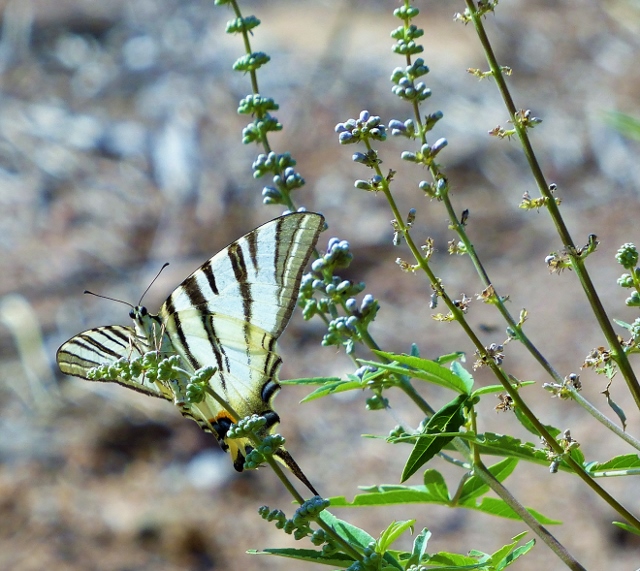
“Scarce Swallowtail” – so named in English due to it being rarely seen in the UK – now on the “vulnerable” list in Europe
…. and found an Ancient Acropolis….
….some old wells…….
…. and a lovely small church.
From where that road joins the coast road back to Vathi there are three or four tavernas dotted along the shoreline – and we have eaten well at two of them. Some yachts were anchored along this stretch but it would only be tenable in settled weather.
Palaia Epidavros is built on the ruins of the ancient city state from which its name derives. Unlike its aforementioned northern “new” town it is quite a bustling place with lots of anchoring options. On our first visit we moored on the harbour wall and witnessed anchor mayhem when boats started to leave in the mornings.
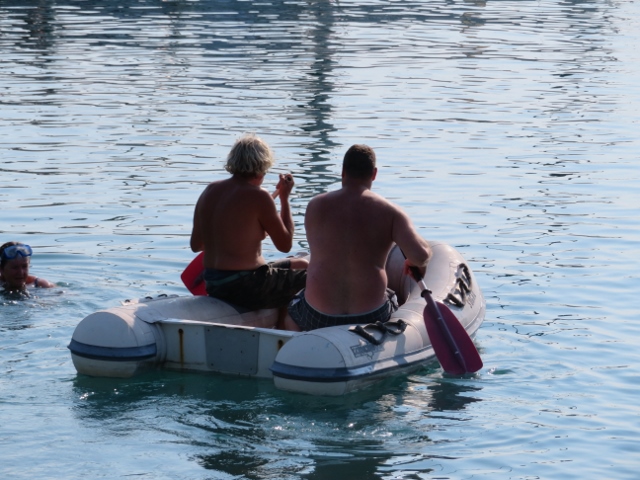
Mike and John to the rescue. They ended up stuck in the hot sun for an hour when a diver from one of the boats decided to use the dinghy painter as a trip line!
Given that knowledge, we anchored in the bay during our second visit.
As many of you will know Epidavros is a famous archaeological site, but the large Asklepieion theatre, museum and extensive ruins are several miles inland from the coast. What we didn’t know beforehand is that there is also the “Little Epidavros Theatre” just to the south of the anchorage, accessible by a dirt path.
Able to seat 2,000 people it is given equal importance in the archaeological world but, unfortunately, we were unable to access it as they were setting up for the annual production of Greek plays. We studied the posters carefully as Mike and I considered whether to try to see one of the plays. But, given that we wouldn’t have a clue what was happening in them never having studied Greek Comedy or Tragedy, not being able to follow the language and with relatively expensive seat prices we decided not to bother.
With Chris and John we followed the path a short way up the hill from the theatre and came to “The Holy Church of the Life-giving Spring” [Zoodochos Pigi]…
On our first trip we only made it to the first watering hole where posing for holiday shots almost resulted in an unexpected dip.
The bay was lovely and we could see why several boats came round for daytime relaxing and swimming. Or we thought we could, little knowing then that the real reason they came was to snorkel the sunken city.
Fortunately, by the time we visited with James, Steve and Gill we had discovered this fact and took full advantage of it.
Quite fascinating.
The northernmost anchorage on the circuit is Korfos, a fantastic almost landlocked bay.
John had enjoyed himself taking the helm on the way there…
….. but, surprisingly, suggested Mike or I should take over for the docking procedure!!
Having been sent away from “Papa George’s” restaurant berth because they were expecting a charter fleet we managed to secure a berth on the small pontoon to the south of the tavernas. We were very glad of this later in the afternoon when large spots of rain heralded quite a squall….
…… followed by a short thunderstorm. Whilst John, Chris and I steamed in the resultant sauna below decks, Mike braved the weather to ensure that all was well at the dock – particularly as the small motorboat next to us was not actually anchored even though his anchor was down. With no-one aboard Mike had tried to tighten the chain for them which was when he discovered it wasn’t holding and that the anchor was probably directly below its bow. Anyway, with fenders on both boats all he did was push into us and no damage was done. The weather cleared….
…. and everything went back to normal enabling us to sample the delights of the small town.
We really liked the feel of the place and were happy to meet Gill and Steve there for their first taste of the Aegean. We concur with the cruising guide which describes the holding as “poor in places”. On our first visit we saw several boats struggling to set their anchors and a spot towards the eastern side which “Coriander” first tried wasn’t suitable but we both found excellent holding more towards the north-west and spent a happy evening ashore. Interestingly, there wasn’t a charter fleet on this night and Papa George’s berths and restaurant were totally empty. It appeared to us that the locals don’t frequent it – so neither did we. Instead we returned to the friendly and popular “Ostrako” of our first visit with its limited, but relatively inexpensive, menu of well cooked food.
The final stop for Chris and John was the small island of Angistri, three quarters of the way back to Aegina from Korfos. Again a very small harbour and stopping point for the Angistri/ Aegina/Athens “Dolphin”….
…. and where, again, we considered ourselves lucky to bag a berth. On our first night there we witnessed a total lunar eclipse resulting in the famous “blood moon”. Lying prone on the quay behind the boat Mike was lucky not to get run over whilst trying to take photos of it. He needn’t have bothered as Chris captured it perfectly with her excellent compact “point and shoot”.
Thanks Chris.
We walked across the north side of the island taking about 45 minutes to reach the ferry harbour, Scala. This is a very popular resort with younger holiday makers – a kind of Greek Ibiza. It was obviously once a very traditional small Greek village with its lovely church.
It is now full of trendy bars, café’s, gift shops and clubs and, unfortunately, Angistri village tries to compete with its club just above the harbour which kept us awake until 3am. One of these days – or rather nights – we will just have to bite the bullet and join in.
Having said that we are perfectly happy with early evening drinks on the terrace.
On the south of Angistri are the Nisís Dhorousa anchorages and it was here, with James on board and in the company of “Coriander” that we anchored and took long lines ashore. Mike and I remember doing it once before during a Greek charter holiday, though we can’t remember which island. What we do remember is that we had a strong swimmer on board [Bill] for whom it was no effort. James and I tried taking the lines by paddling in the dinghy. That worked well until we tried to paddle back but, as we don’t have floating lines we couldn’t get back to the boat. I ended up diving in and swimming the rope back. Steve had the outboard on his dinghy which gave it enough “Umph” but made it difficult at the shore end because of the prop. Still we both managed….
…. went to the pleasant nearby tavern to celebrate…
…and learnt some lessons as a result of the experience. It is a very popular anchoring technique for many people and, in some places such as this, the only way to facilitate all the boats wanting to be there to be there safely i.e. not swing but it is unlikely to become my preferred option.
James’s final overnight anchorage – before leaving from Aegina – was the small island of Nisís Mona – a very popular day anchorage for passing yachts and where tourist day trip boats come from nearby Aegina. By sundown the taverna closes and it becomes almost deserted.
In some pamphlets it is described as a nature reserve with deer and peacocks wandering around. I went ashore on my own for an early morning stroll. No deer, but several strutting peacocks.
Just a short half day sail south of Aegina Town is the island of Poros. Whilst there was no time for us to extend the trip to there with James we were able to include it in Chris and John’s circuit because they spent two weeks with us. Its position is such that it is an obvious stop for anyone going between the northern and southern Saronics and/or into the Gulf of Argolis. Thus it was another regular stop off point for us [and just about every other boat out there!]
But I think you will have probably done enough reading by now so, to hear all about it, you are going to have to wait for part two of the tales of family and friends in the Saronics and Argolic Gulf.

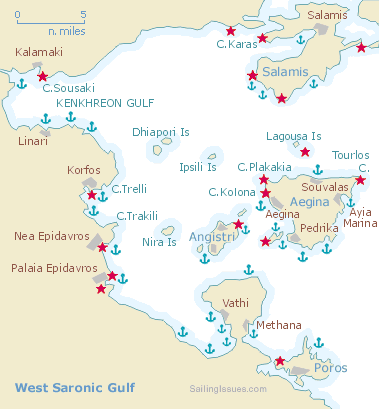
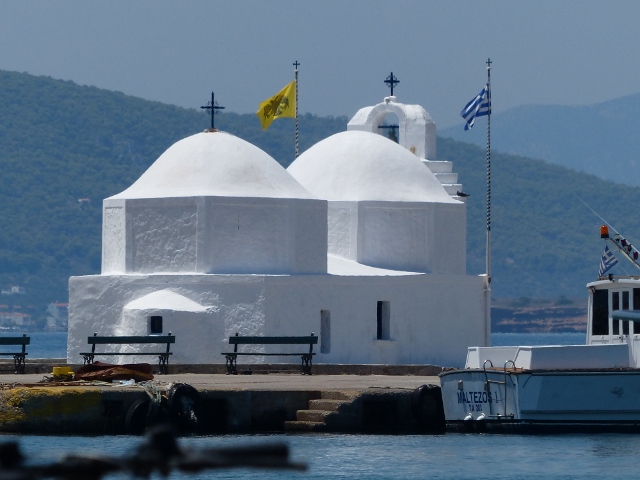
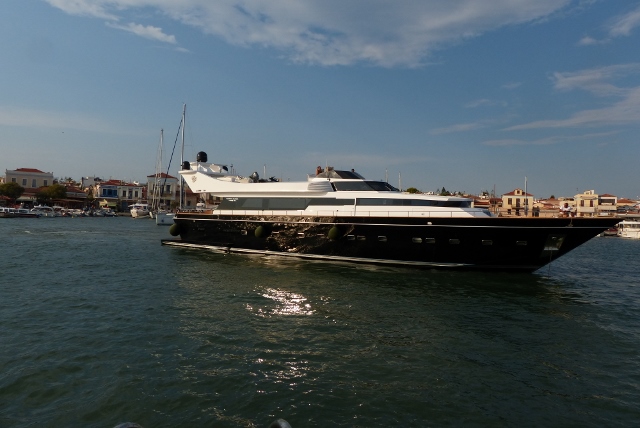
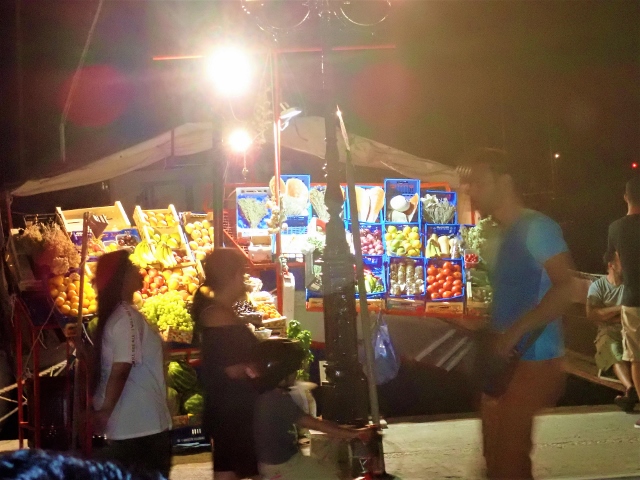
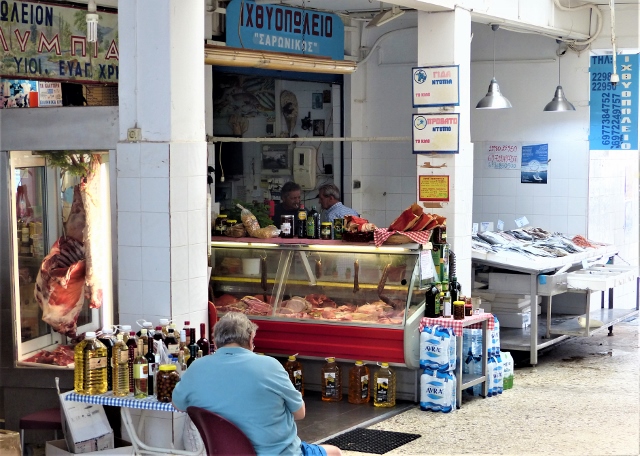
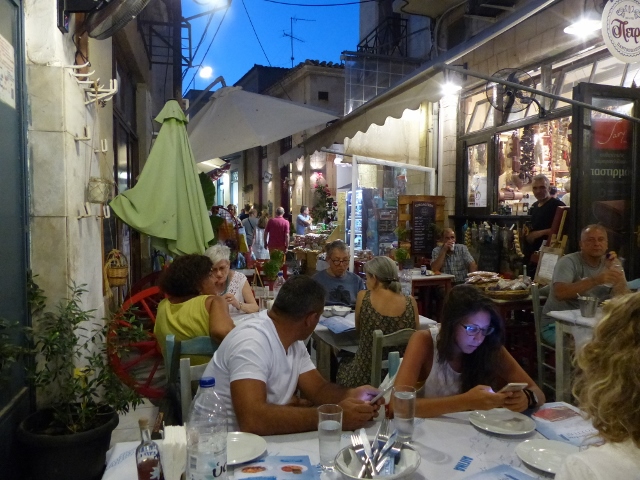
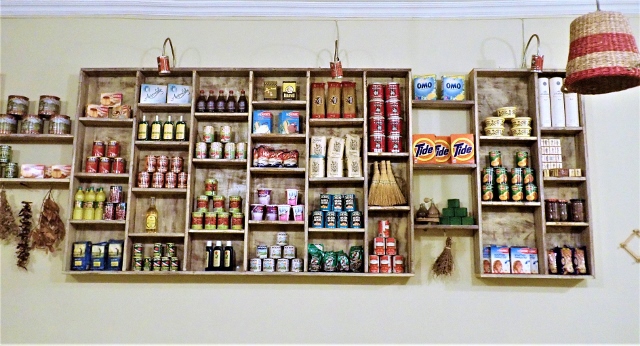
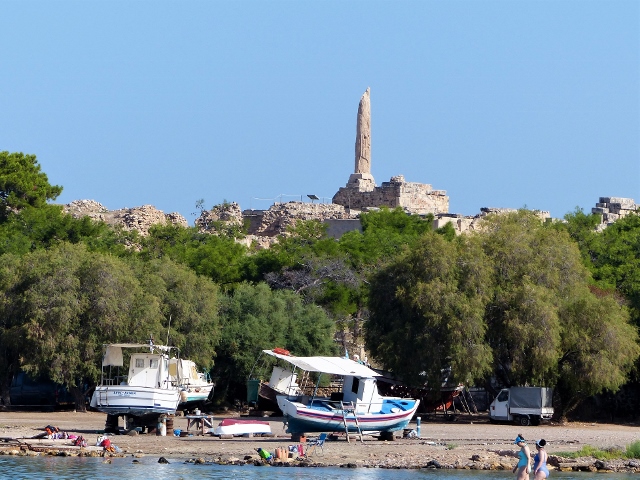
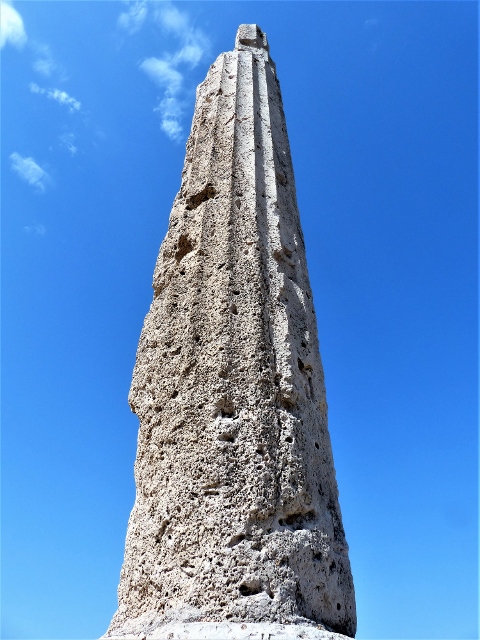
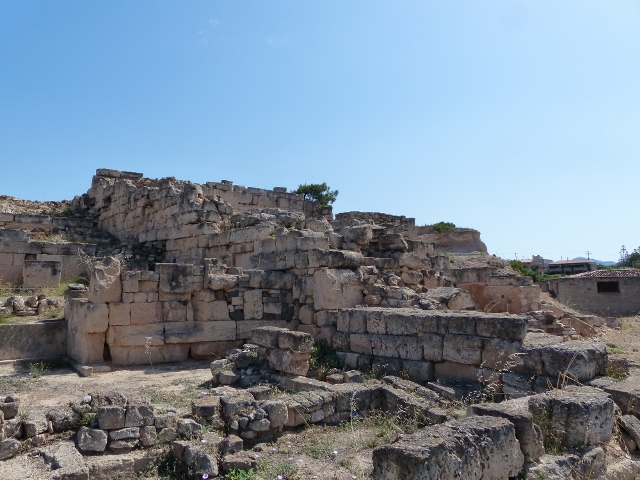
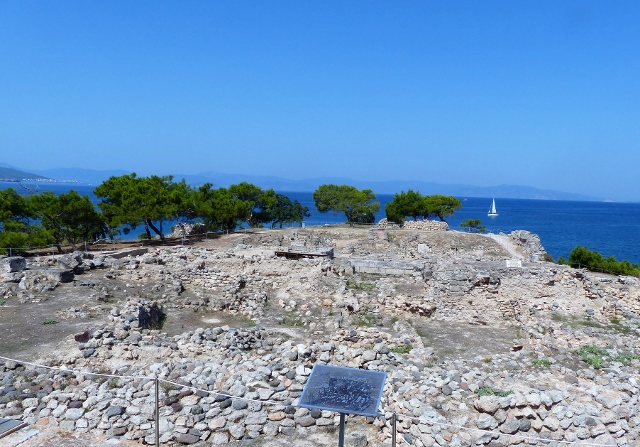
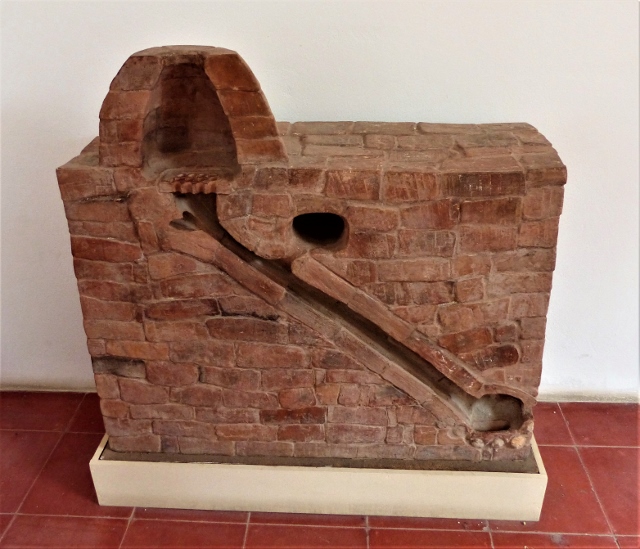
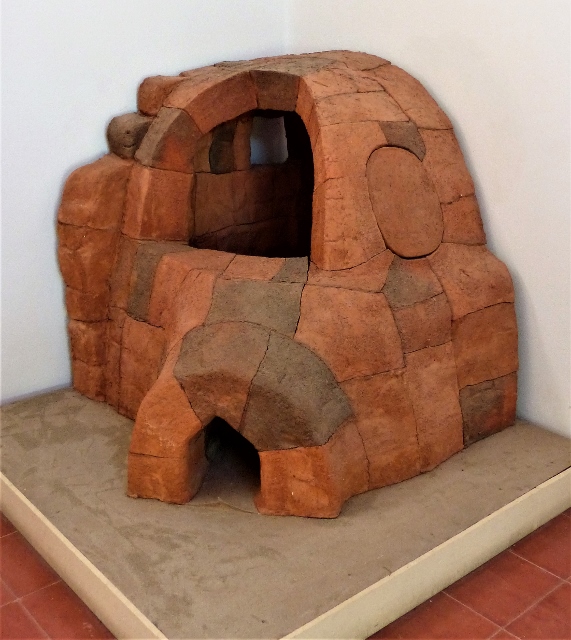
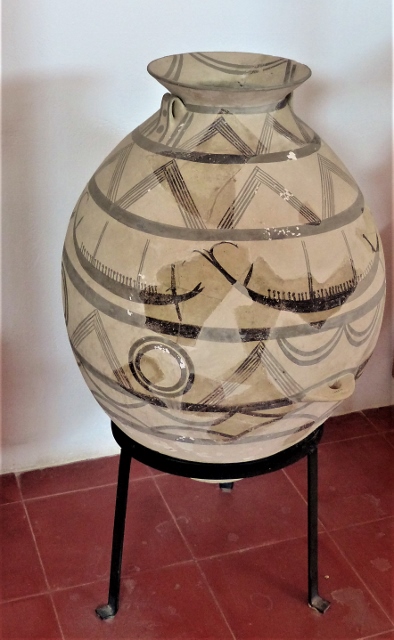
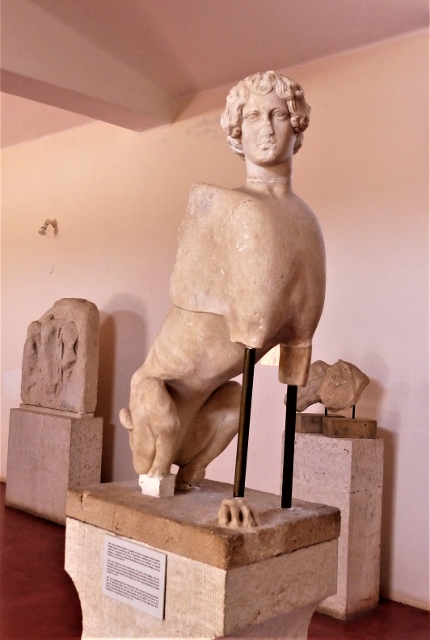
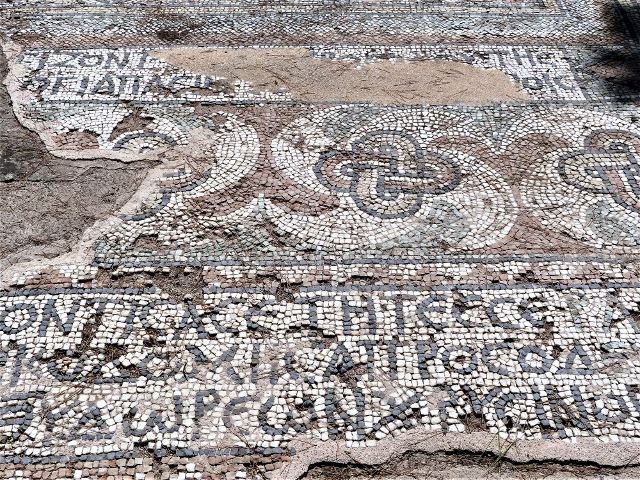
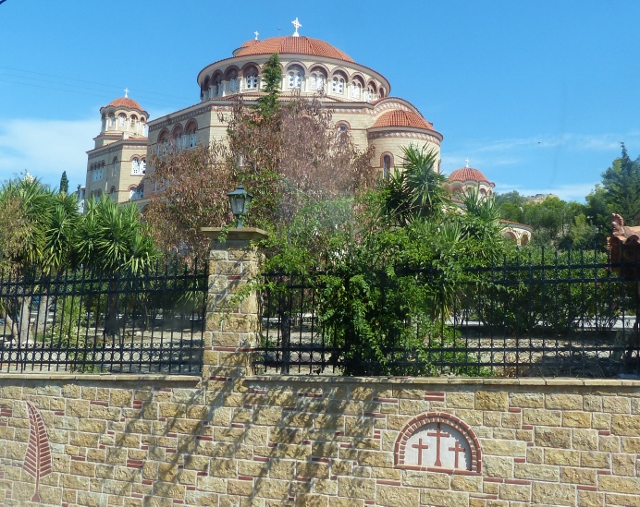
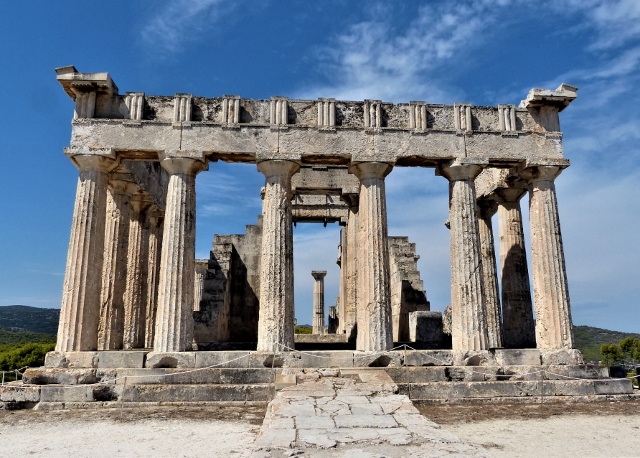
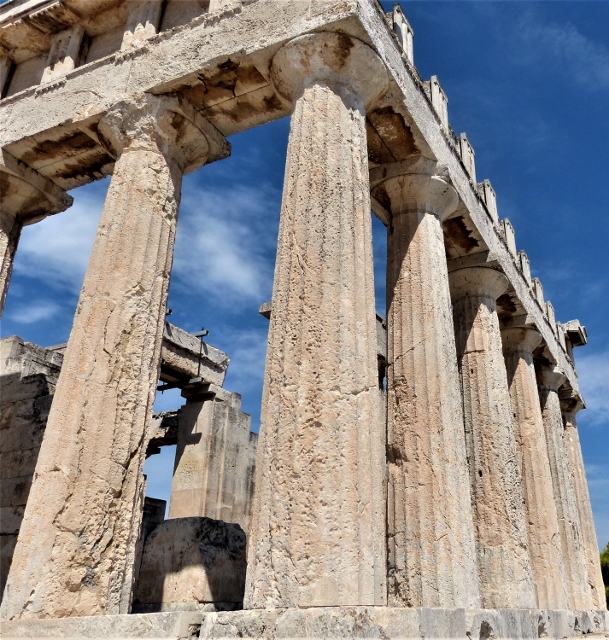
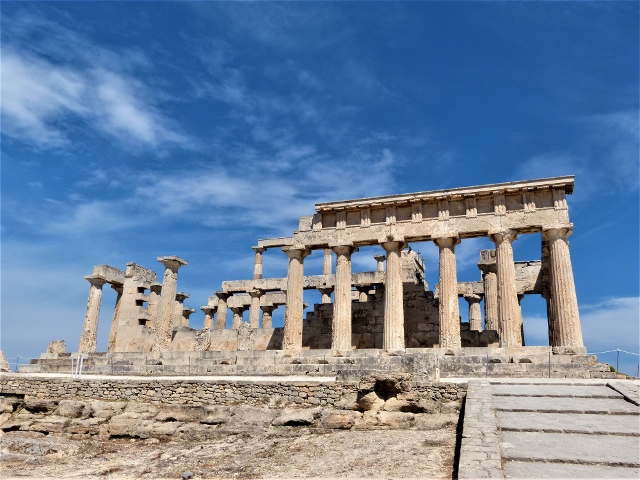
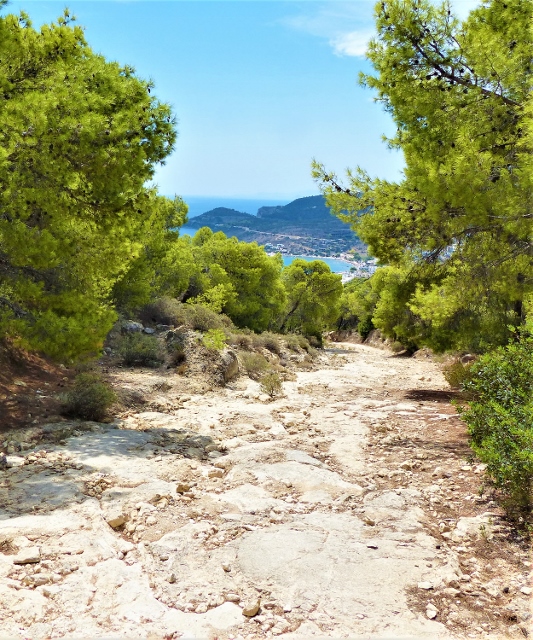
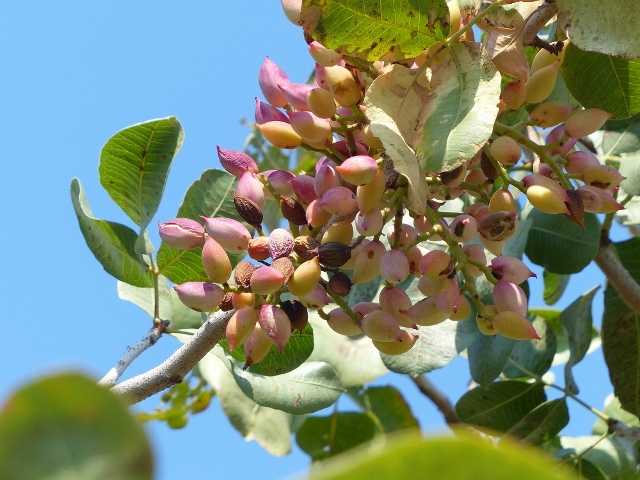
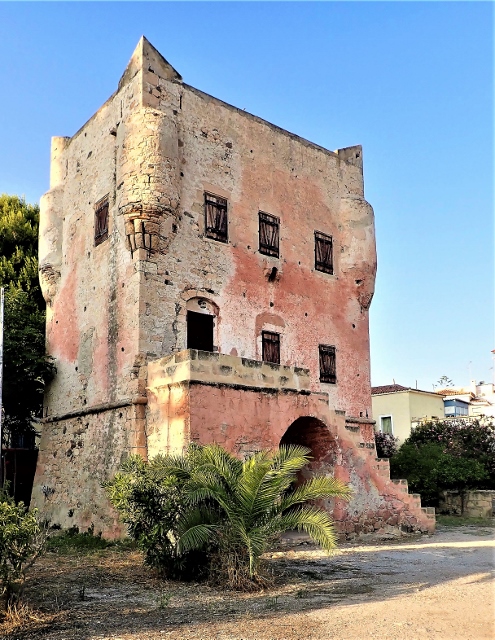
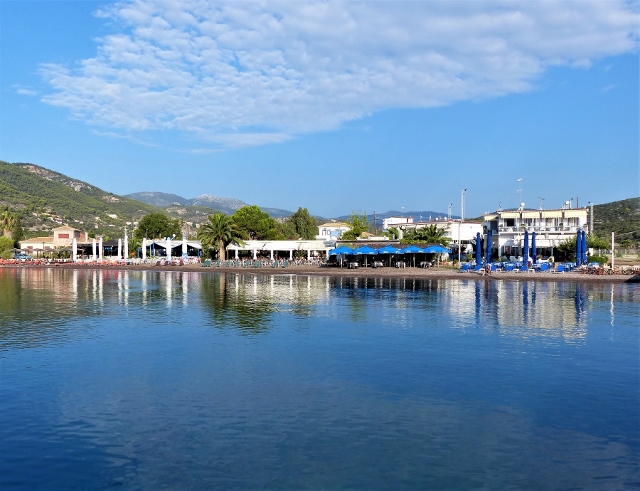
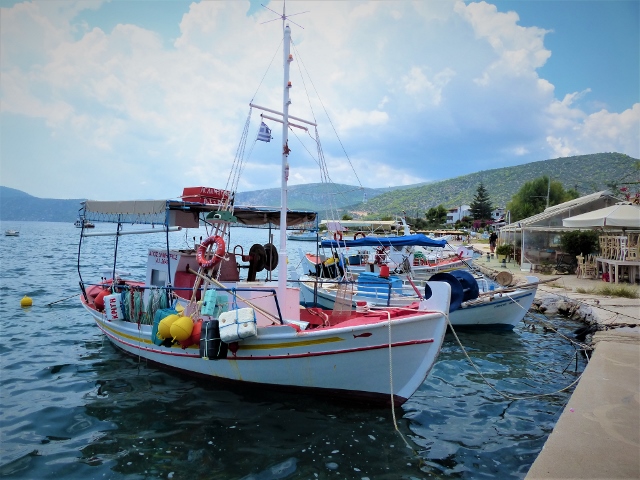
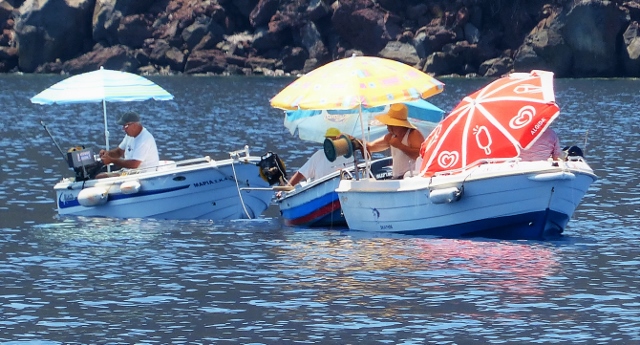
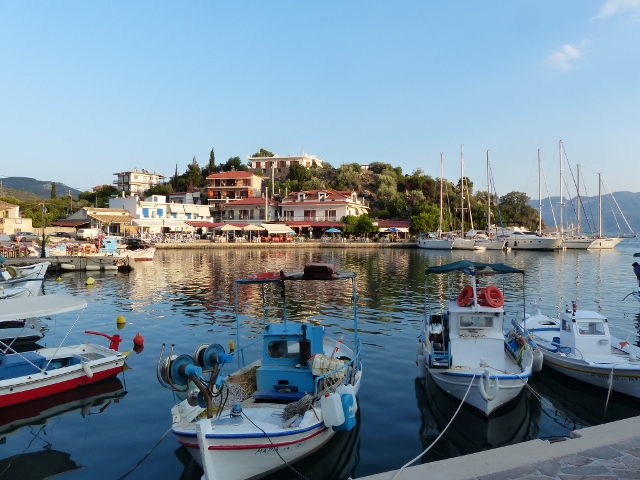
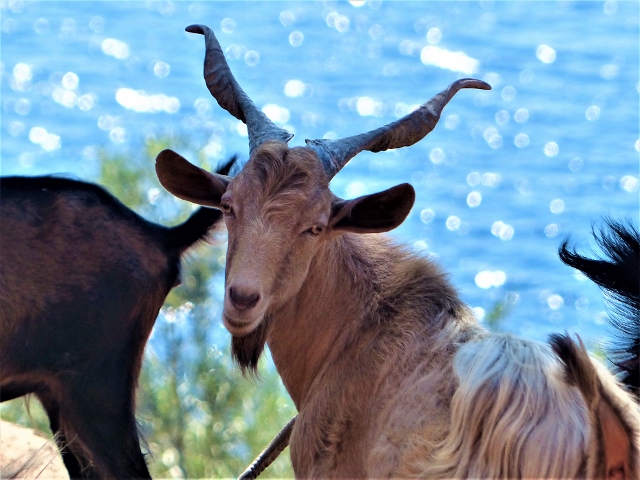
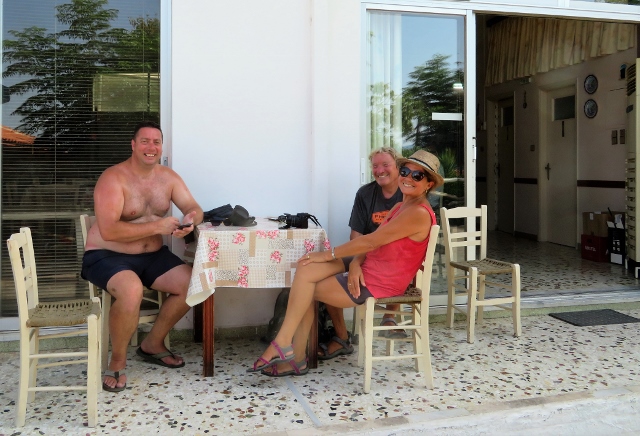
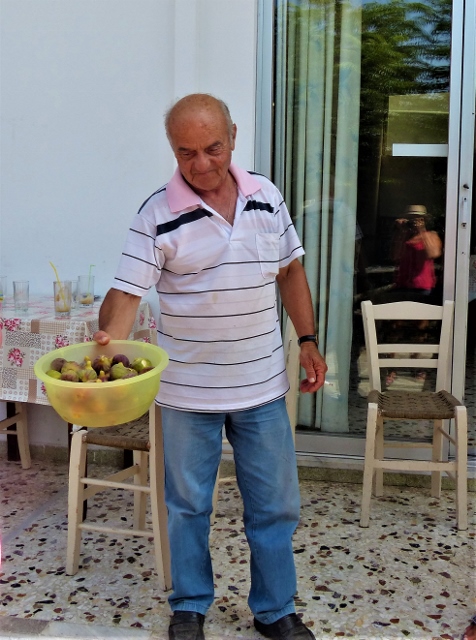
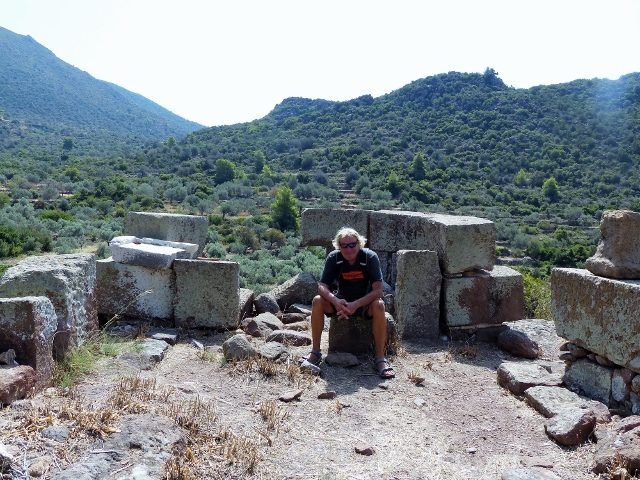
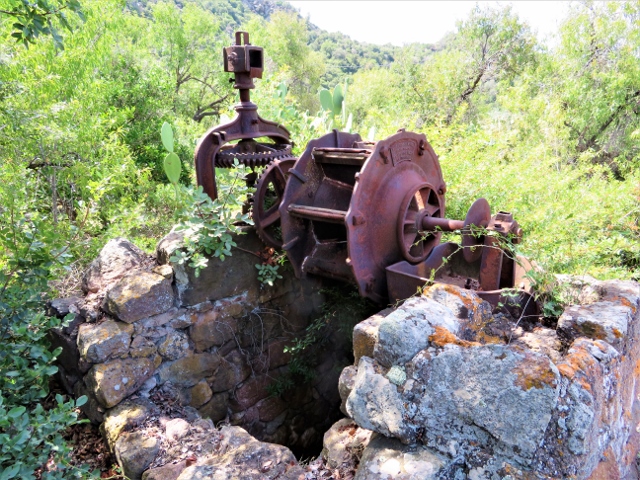
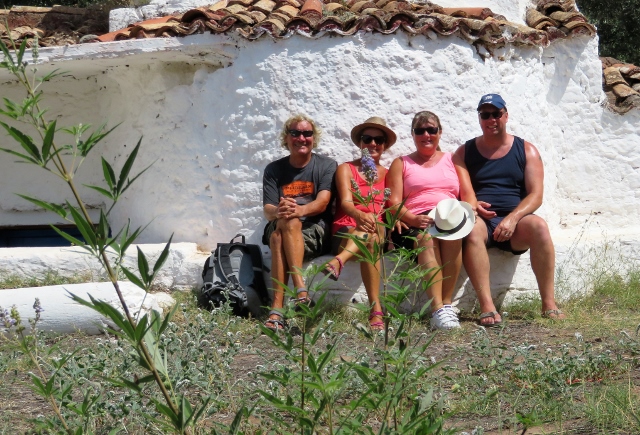
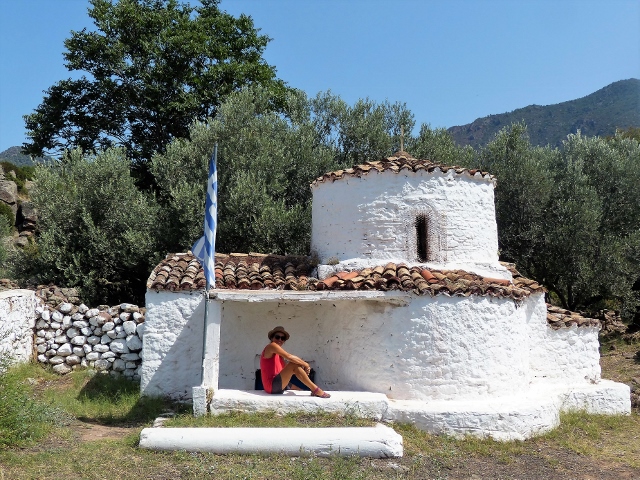
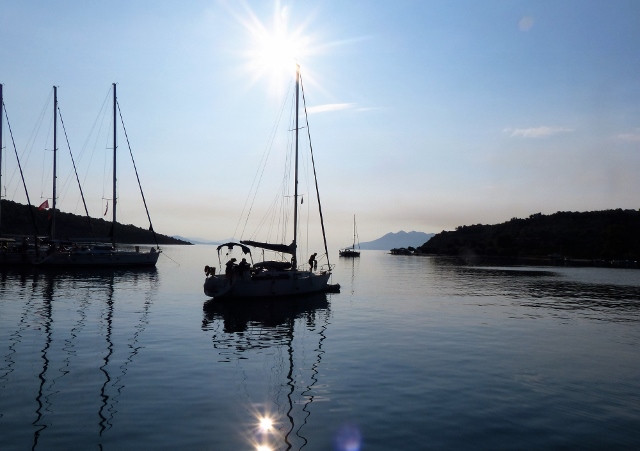
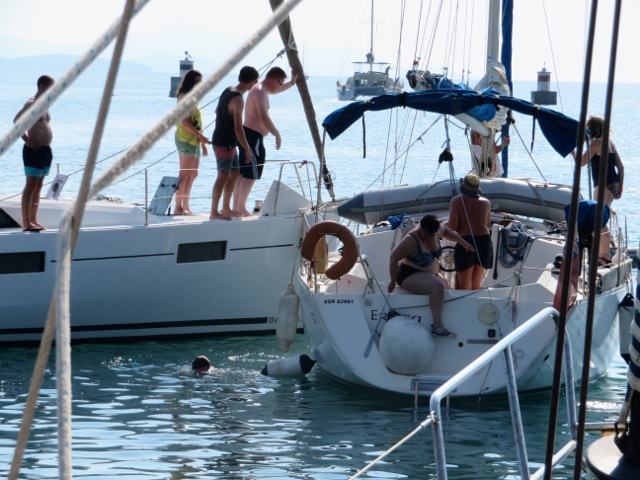
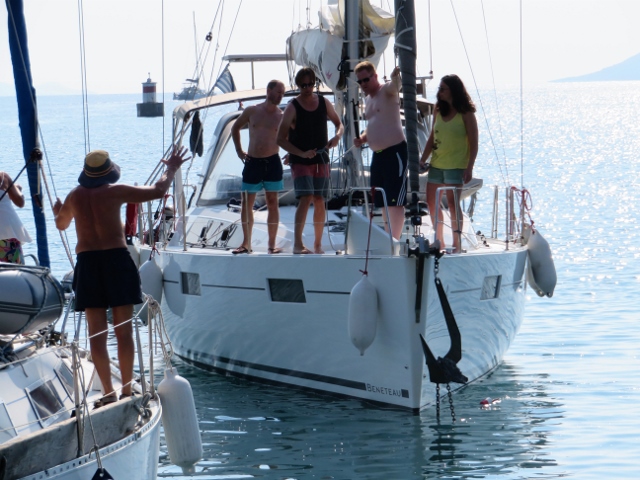
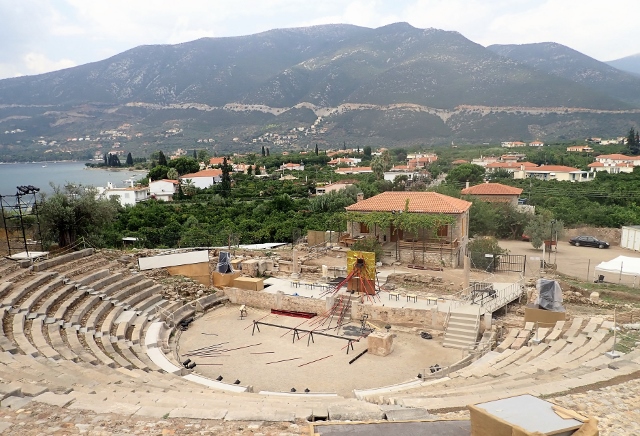
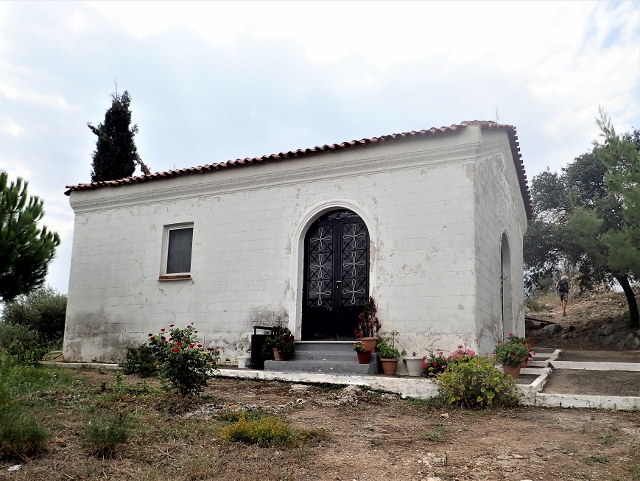
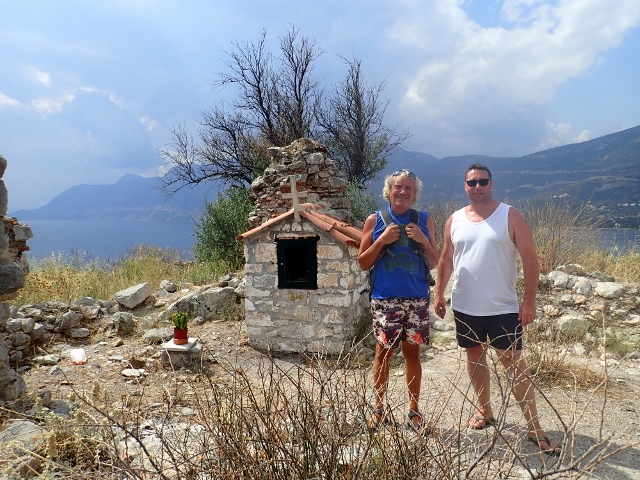
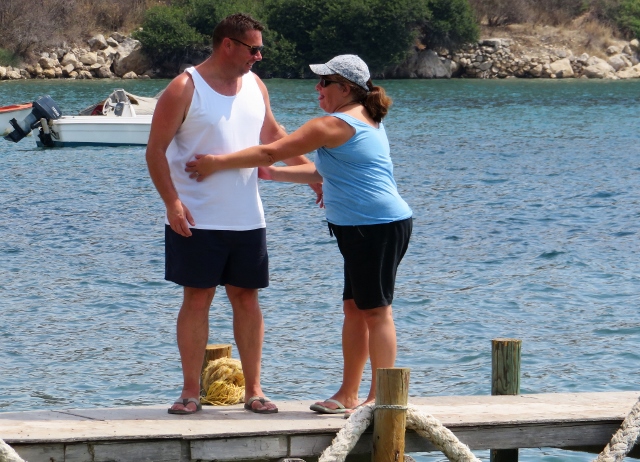
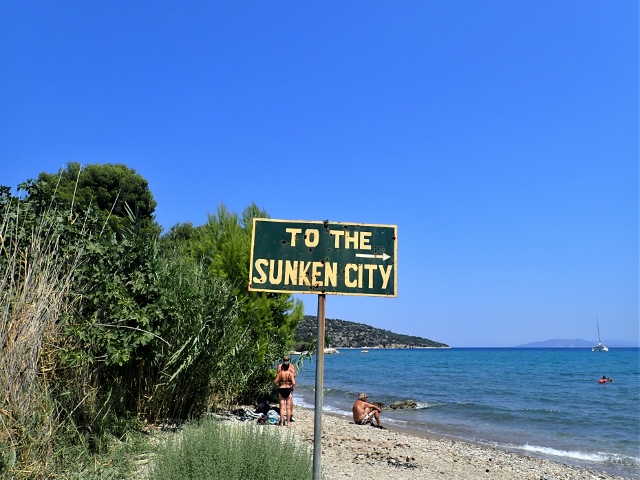
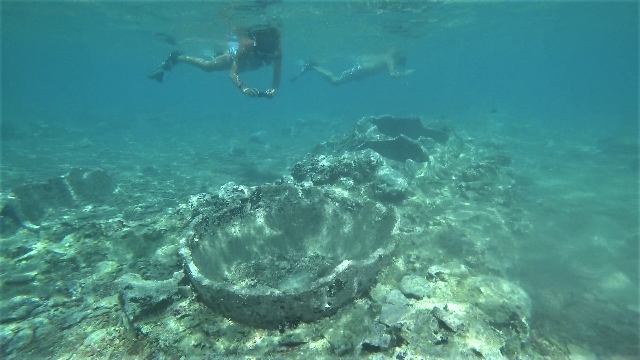
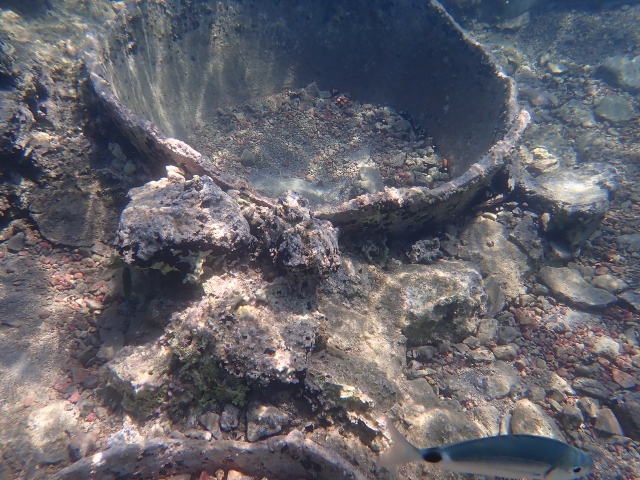
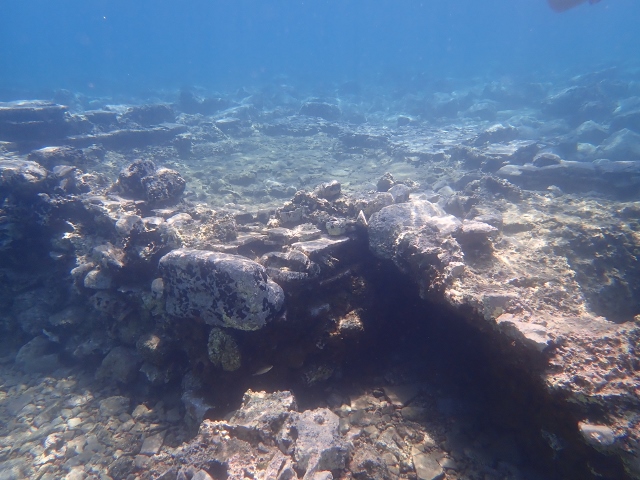
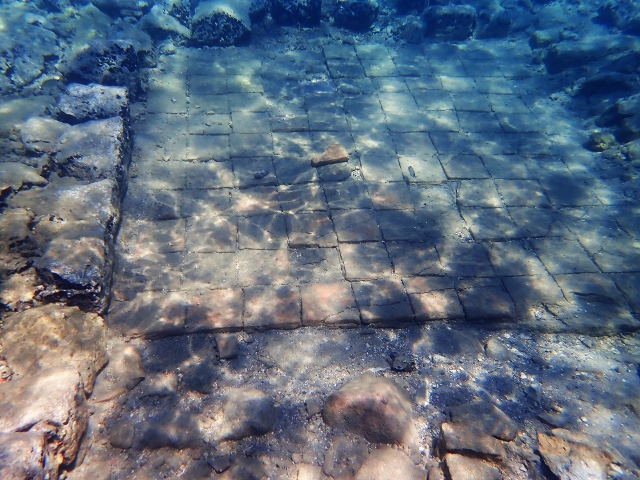
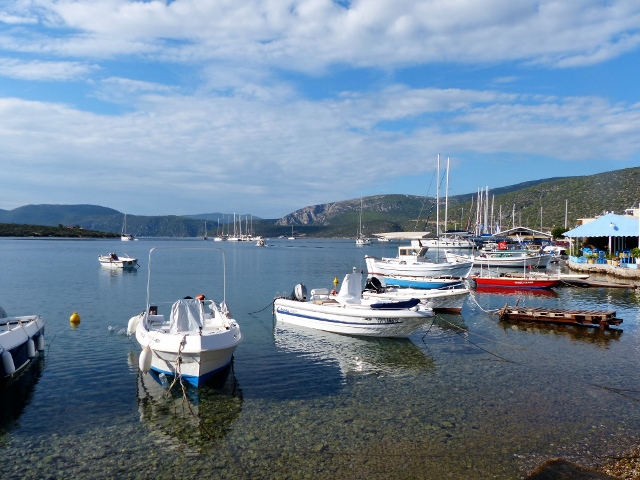
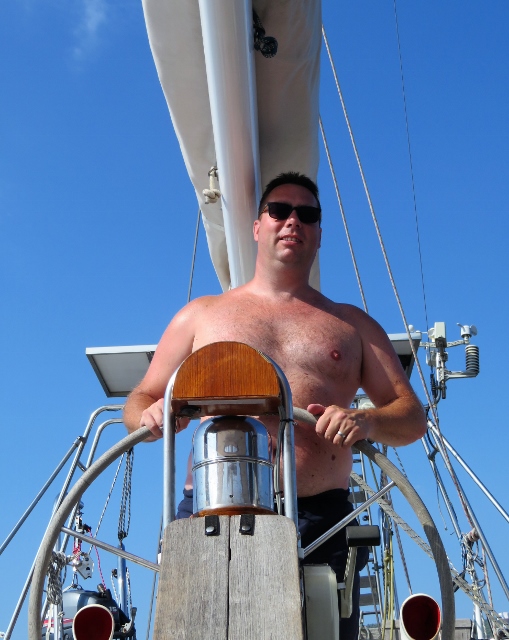
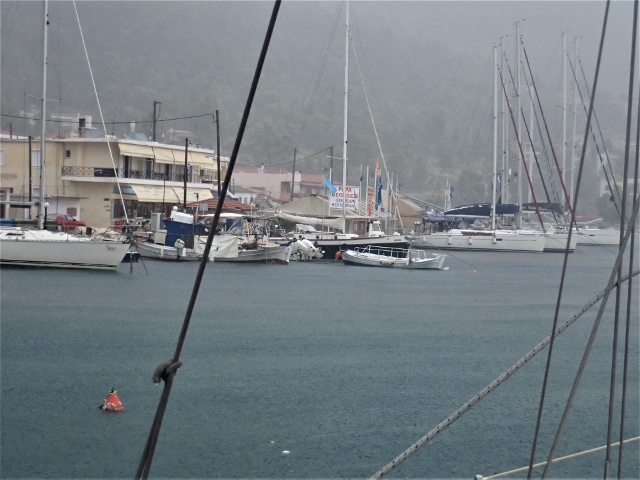
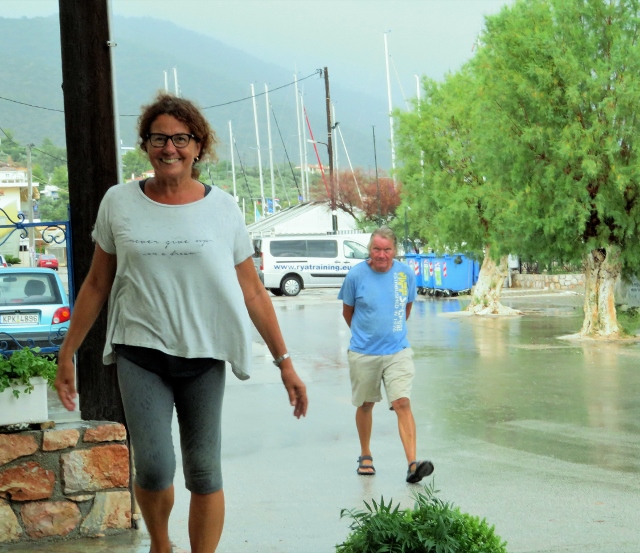
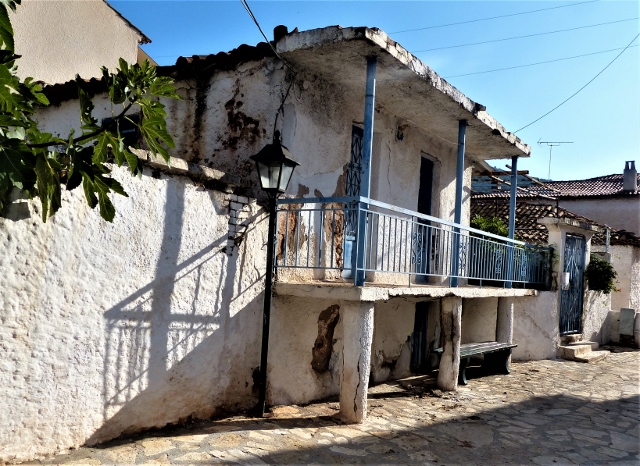
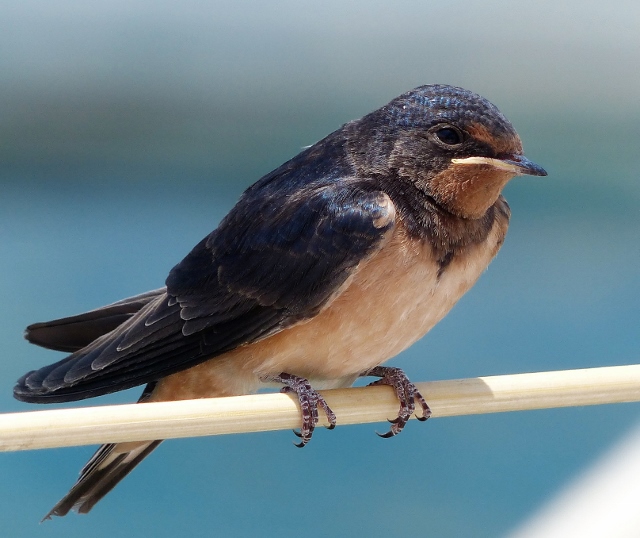
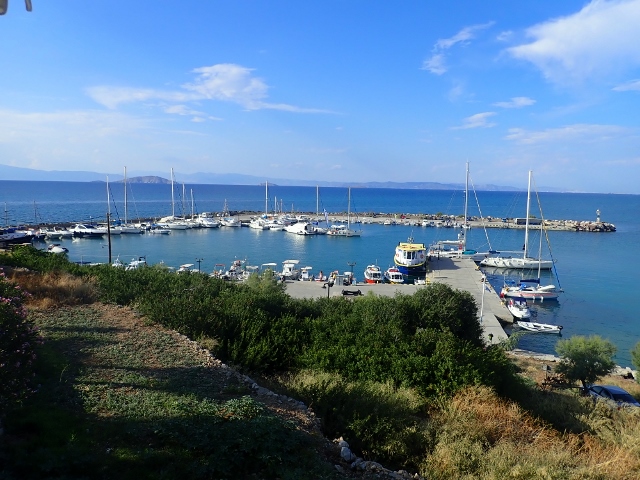
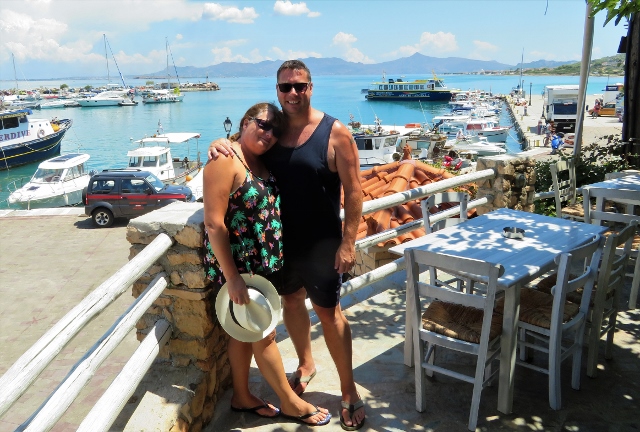
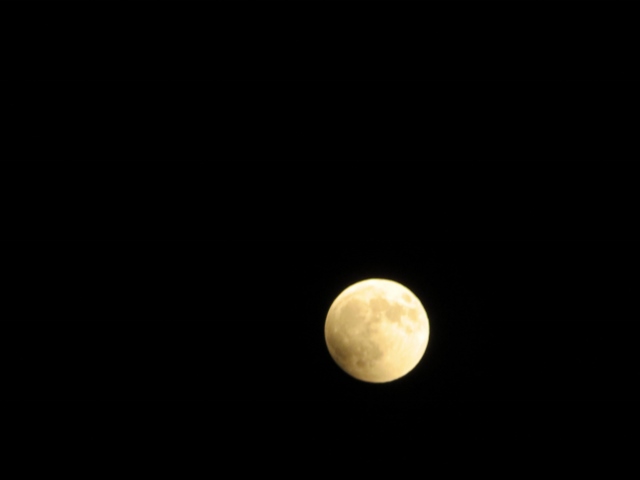
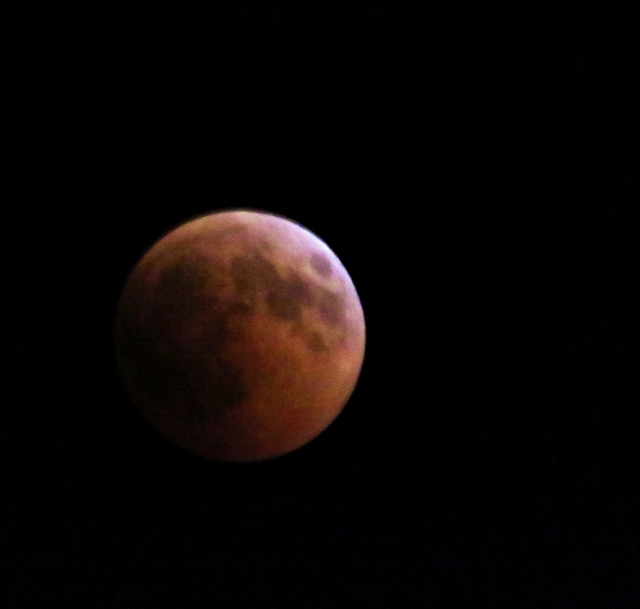
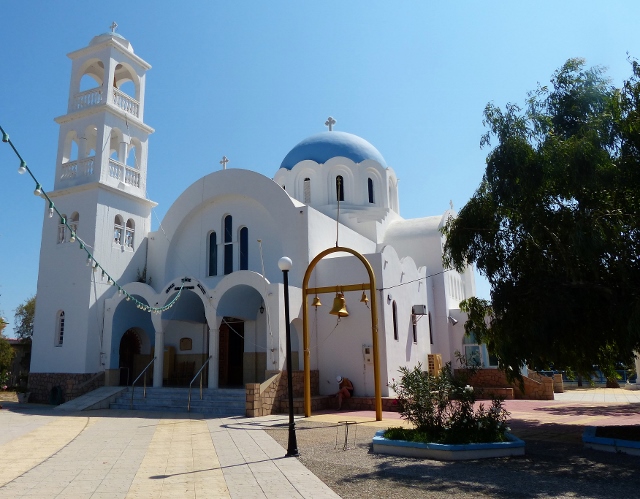
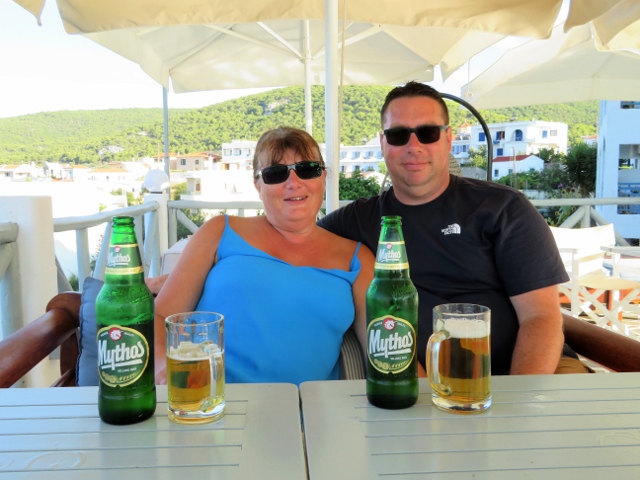
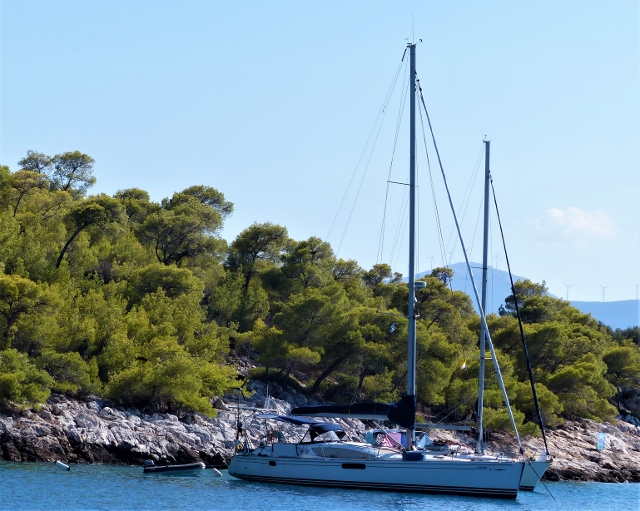
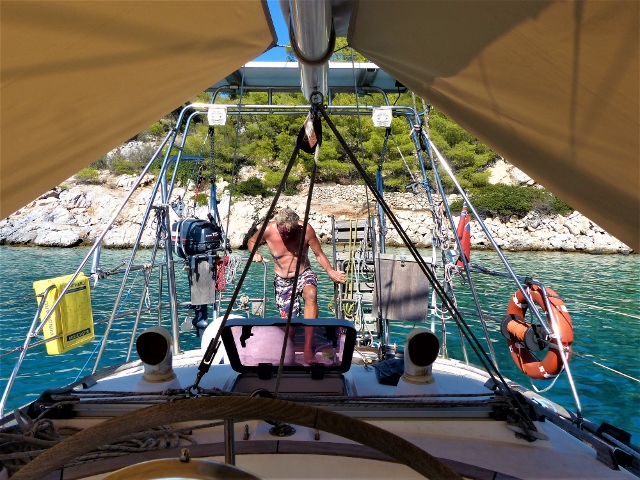
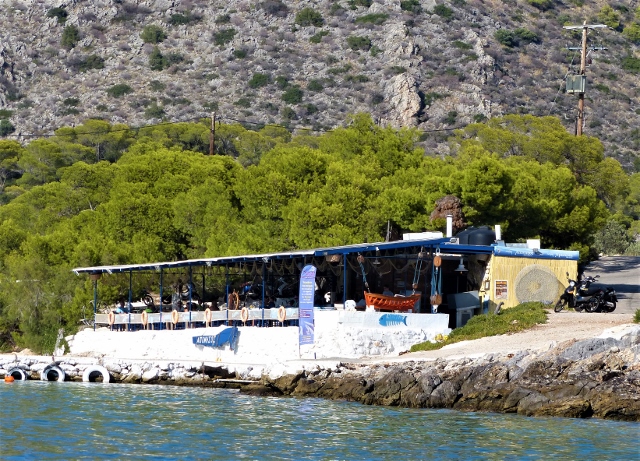
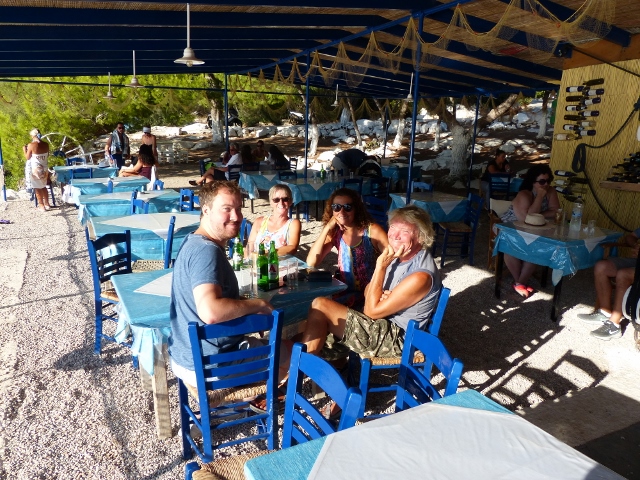

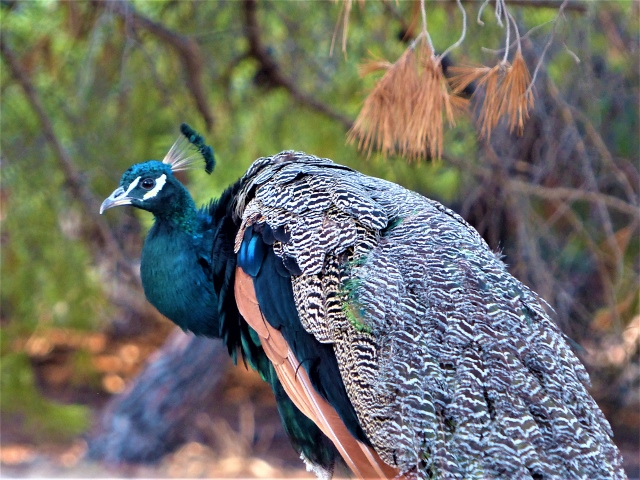
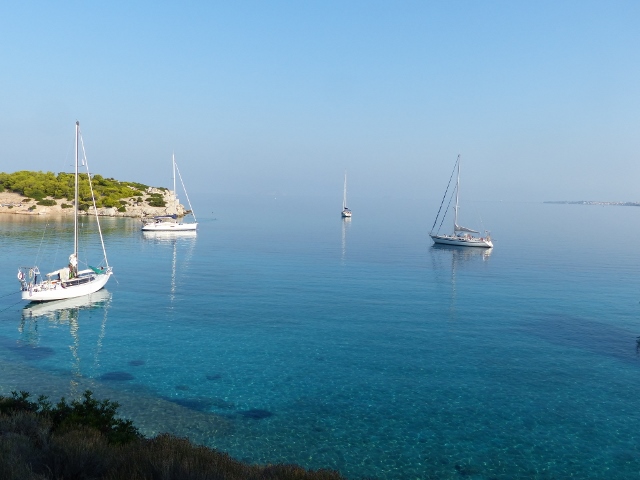
1 comment
Thank goodness you didn’t use the other 200 photos I took of the moon!
Great (if hot) holiday
Thanks
Chris & John